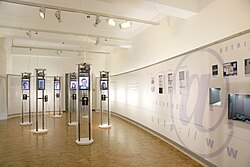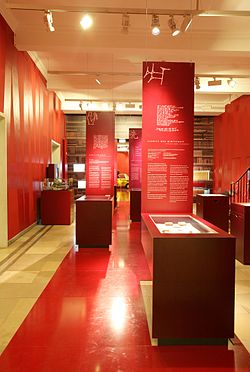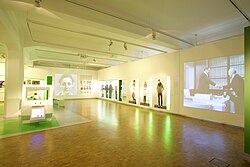 Entrance Area | |
 | |
| Established | 1902 |
|---|---|
| Location | Lessingstrasse 6, D-90443 Nuremberg, Germany |
| Coordinates | 49°26′44″N11°04′28″E / 49.44546°N 11.07450°E |
| Director | Marion Grether (from January 1, 2013) |
| Website | Museum of Communication Nuremberg |



The Museum of Communication is co-located with the Nuremberg Transport Museum in Nuremberg, Germany. It shows various ways in which people communicate with each other. [1]